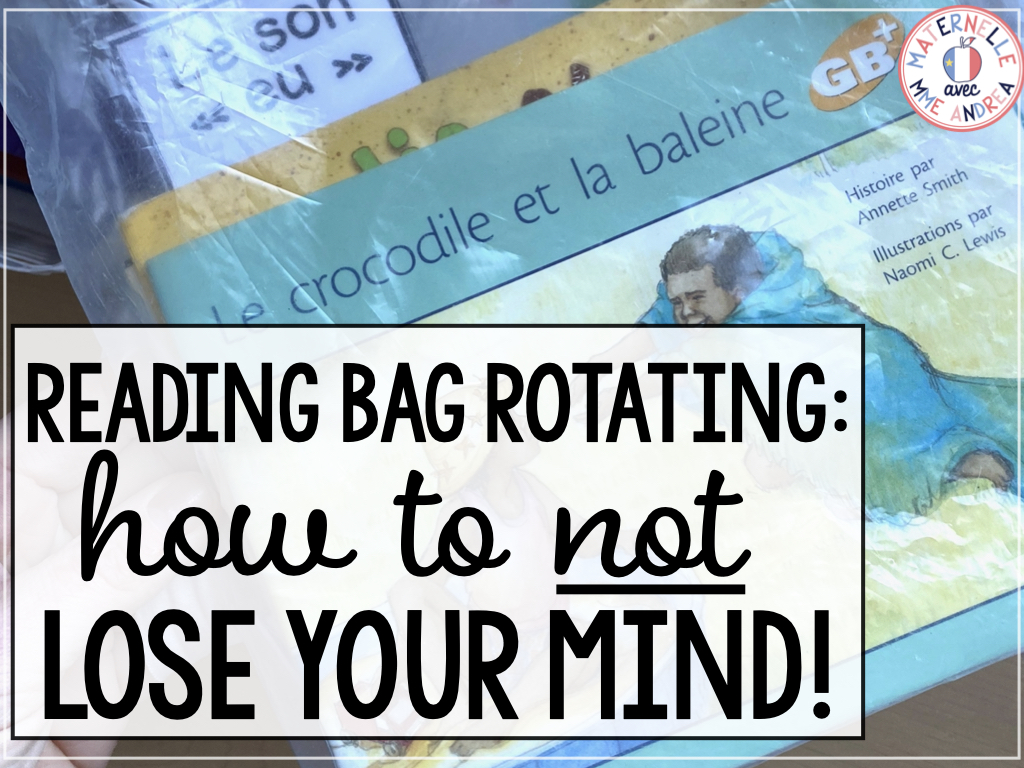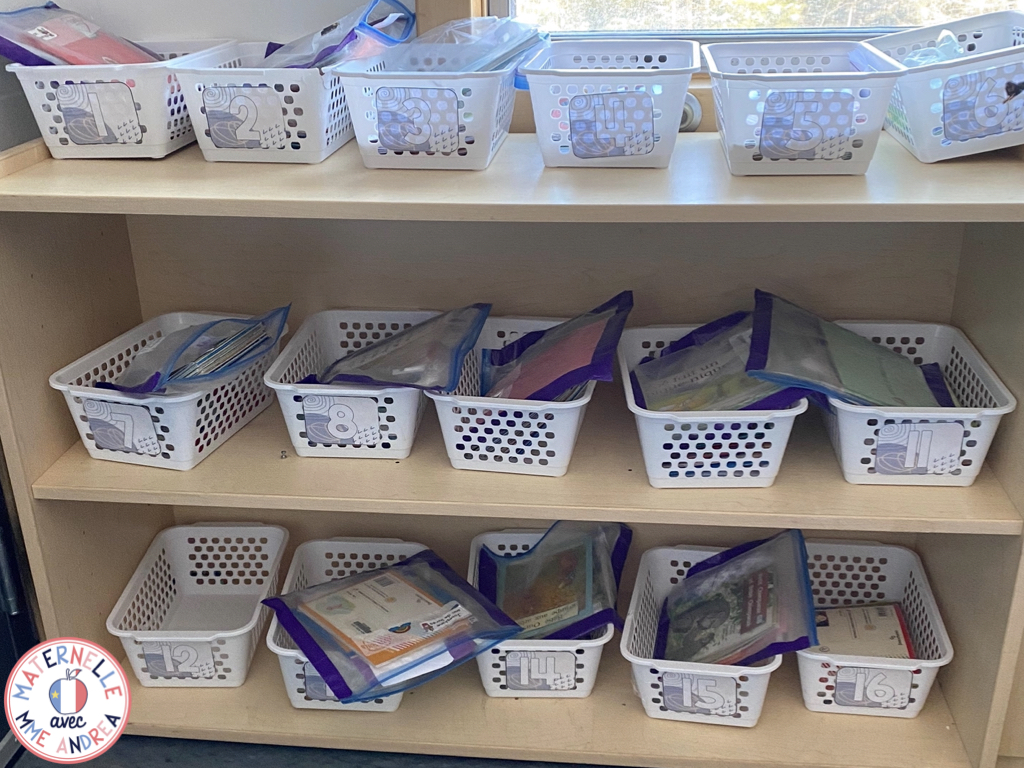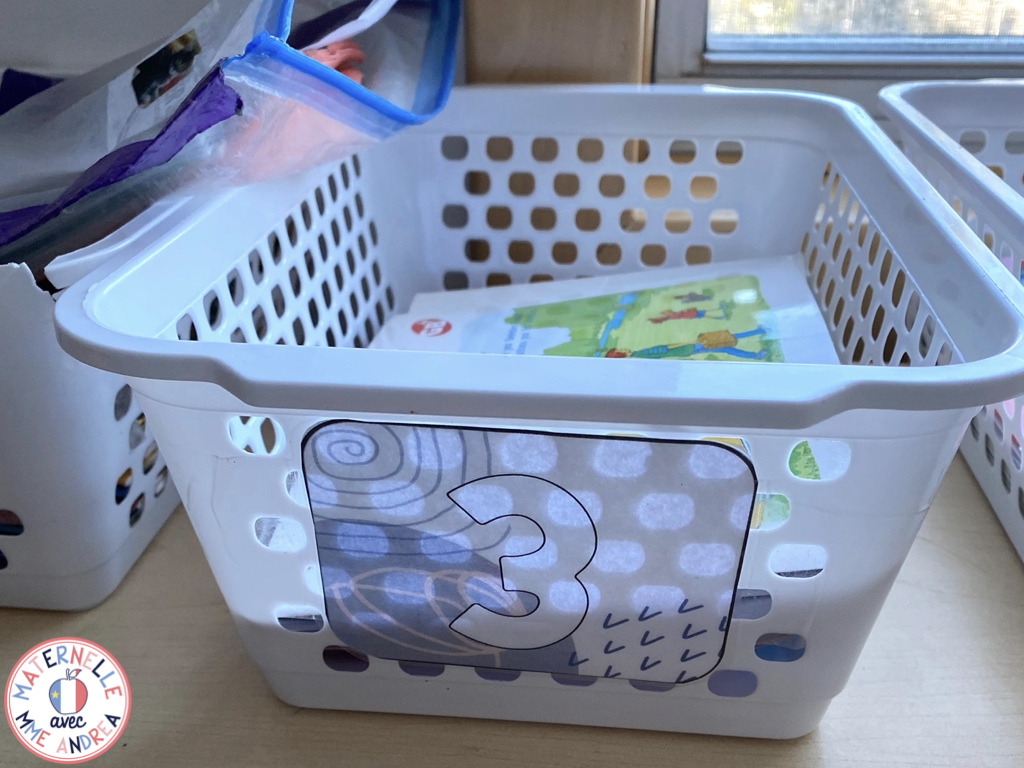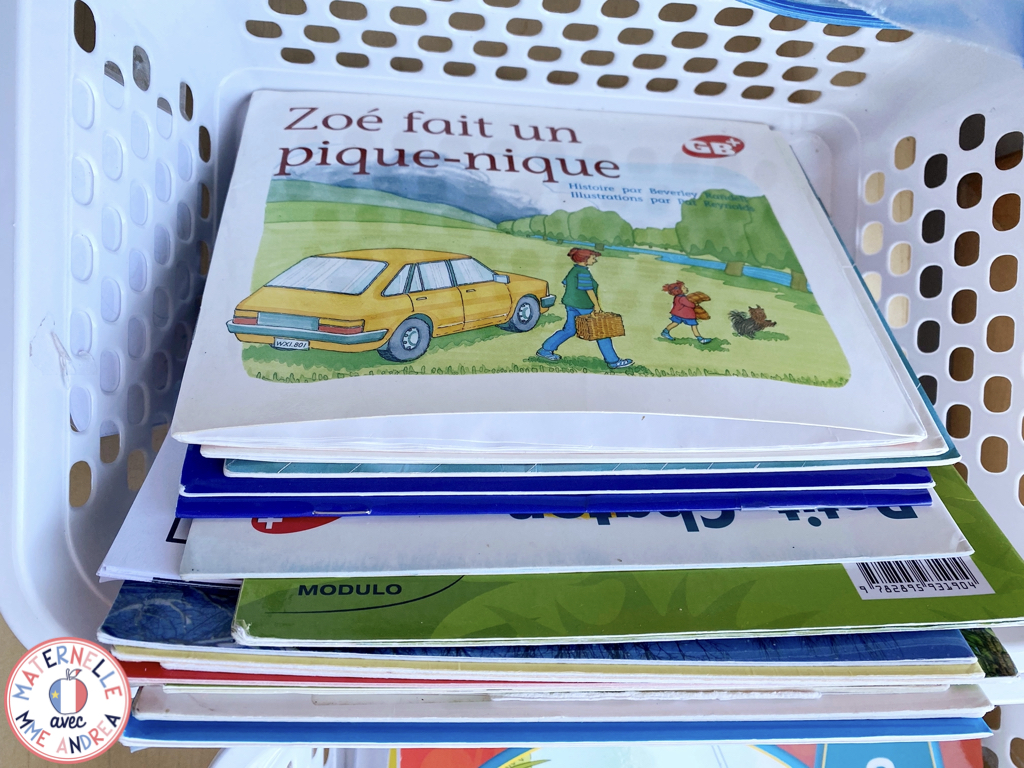My first year teaching, I remember switching out the guided reading books in my students’ take home reading bags was the BANE of my existence. Every Monday, I would try to find an activity my students could do independently that would take enough time for me to take out their current books and add new ones at their “reading level.”
It was so hard to keep track of who already had taken home what, and I was certain that they needed brand new books every single week or the world would end (you know how it is your first year!). And, invariably, I would run out of time and need to finish up over my lunch break or on my prep.
Classroom organization is not my forté, but over time I have established a variety of systems in my classroom that do help make my life easier. Rotating the books in my students’ take home reading bags was one of the first systems I put into place. How did I change it up you ask? SIMPLE! In fact, I do barely any work.

This blog post is all about that system. But before I share it, I would like to take a second and discuss three mindset shifts I had to make in order for it to work:
Home Reading Bag Mindset Shift 1
If students can do it, students SHOULD do it. This is the first principle I apply to any system in my classroom! We are a community, we work together, everyone does their part. Switching out books is not that complicated (especially with the right system). There is no reason why students can’t take on that responsibility! Plus, with students in charge of their reading bags, they are able to choose which books they want to take home and read. In fact, with my system, each student will take home four books – and I only choose one. They choose the rest!
Home Reading Bag Mindset Shift 2
“Homework” should be review, not new learning. This applies to books, too! I decided I did not want my students to bring home any books they had not yet read with me. I felt like sending home beginning readers full of annoyingly complex French vocabulary was a recipe for disaster. Now, I send home only books my students have seen with me. I can be sure that they are familiar with the vocabulary, the sight words, AND have a specific strategy for that book to practice!
Home Reading Bag Mindset Shift 3
Repetition is good! This applies to many areas of the primary grades, and was a big limiting belief I had as an adult when I first began teaching. I thought repetition was bad and boring, when in fact, many students THRIVE on repetition and knowing what to expect. If a student brings home the same book more than one week… what’s the big deal?! They might just love that book! As an adult, I have been known to reread a few (in fact, many haha) of my favourite books lots of times myself. With my system, I do choose one new book each time we switch books. So, all students are guaranteed to get some new reading material – even if they tend to choose a few of the same books over and over.
So, what do I do? Friends, it is SO simple.
First of all, all of my students have their own reading basket in my classroom. Here is a peek at how that looks all set up on my shelf:

You might instead choose to have a basket per small group – totally up to you. I just find one basket per student easiest. We do lots of paper books in the beginning of the year, and those can go in their baskets too.
Also, our cap is 20 students in maternelle/première année, so I only need max 20 baskets. I got mine at the dollar store and they are numbered 1-20.
(I actually use numbers instead of names for most labels (cahiers, supply boxes, etc.) so my students all know their numbers well by the time we get to these.)
To begin the year, my students’ paper books go in the baskets. We do alphabet poem books, intro to guided reading books, etc. In première année, I also know their approximate reading level coming in, so I can add some of the guided reading books they likely saw in maternelle.
My students all have a gallon-sized zip lock bag as their home reading bags. There are tons of options for this. The other grade one teacher at my school buys the Scholastic ones with handles, you can get pouches at the dollar store, etc. I like things simple, so I just use Zip lock bags. I do reinforce the sides with coloured duct tape, which helps most of them last the whole year. If someone loses one though or gets a hole in it, it’s easy to replace!

Their home reading bags go home each day and come back to me each day, just like their agendas. I find this daily routine helps everyone be successful – no needing to remember which days to bring what.
I ask families to read from their reading bags 10 minutes a night, and that’s their only homework. Sometimes there are things other than books in the bags – alphabet/sight word flash cards for example, or simple games. My students can choose whatever they want from their bags for their 10 minutes. I find my students love that choice factor, too.
When Do We Switch?
As I said above, students have four books in their bags at all times. Three books they choose from their basket, and one book I choose. The book that I choose is usually the book we read during our guided reading lesson. Sometimes, if the book ends up more difficult than expected, I keep it for a second lesson and I choose another from their basket that they read with me previously.
Each time we do a guided reading lesson (usually twice a week), we switch books. So, we read/they take home a new book (my choice). My students empty their reading bags into their baskets, and then they choose three from their basket that they want to read at home.

I find that step of emptying their bag into the basket before choosing helps cut down on students being lazy and “choosing” the same books each week without really looking ;).
As we read more books together, their baskets fill up with more and more books. Eventually, once they have 5-6 in there, I’ll take out their paper books and send them home to keep. As students move up in reading levels, I also “clear out” their basket of books that are a few levels below their current reading level. They always have a few “vacation” books in there that are easy for them, but the majority are at their instructional level.
This means that we generally end up switching our books twice a week, but it is SO easy. Usually it takes two minutes or less and it happens at the end of our guided reading lesson. This also means that not all students switch books on the same day (I don’t see all my groups in one day), but guess what? Everyone survives, haha!
If rotating your reading bags makes your head spin/is a task that you dread each week, why not give this a try? I promise it is SO simple and will make your life so much better!
Looking for more resources to support your rotating book bag/guided reading books?
If your school doesn’t provide guided reading books and you need some, I do have a few sets in my TPT store. You can check them out at any of the links below:
To read more about how I use the blending books, be sure to check out these blog posts:

